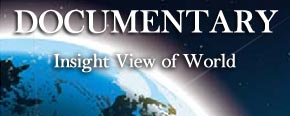 May. 1, 2025
May. 1, 2025
Weather
Tell you a true Tibet -- Sovereignty of Tibet
2008-04-21 16:00 BJTRepublic of China (1912-49)
In the autumn of 1911, revolution took place in China's interior, overthrowing the 270-year-old rule of the Qing Dynasty and establishing the Republic of China.
Upon its founding, the Republic of China declared itself a unified republic of the Han, Manchu, Mongol, Hui, Tibetan and other races. In his inauguration statement on January 1, 1912, Sun Yat-sen, the provisional first president of the Republic of China, declared to the whole world: "The foundation of the country lies in the people, and the unification of lands inhabited by the Han, Manchu, Mongol, Hui and Tibetan people into one country means the unification of the Han, Manchu, Mongol, Hui and Tibetan races. It is called national unification." The five-color flag used as the national flag at that time represented the unification of the five main races. In March the Nanjing-based provisional senate of the Republic of China promulgated the republic's first constitution, the Provisional Constitution of the Republic of China, in which it was clearly stipulated that Tibet was a part of the territory of the Republic of China.
In order to form the first parliament of the Republic of China, the Beijing government promulgated on August 10, 1912 the Organic Law of the Parliament of the Republic of China and the law on elections for members of parliament. These statutes specified the methods for Tibetans to participate in elections, and the right of elected parliamentary members to have a direct say in government affairs. When the Chinese Kuomintang formed the national government in 1927 in Nanjing and held the national assembly in 1931, both the 13th Dalai Lama and the 9th Bainqen Erdeni sent representatives to participate. Article I of the General Outline of the Constitution for the Political Tutelage Period of the Republic of China, formulated during the assembly, stipulated that Tibet belonged to the territories of the Republic of China. The Tibetan local government and the Bainqen's administrative body, Kampus Assembly, also sent representatives to the national assembly in 1946 called by the Nanjing national government.
As in the previous Yuan, Ming and Qing dynasties, the central government of the Republic of China exercised jurisdiction over Tibet. The Bureau of Mongolian and Tibetan Affairs (renamed Mongolian and Tibetan Council in May 1914) was established by the central government in 1912 to replace the Qing Dynasty's Department in Charge of Mongolian and Tibetan Affairs. The bureau was responsible for Tibetan local affairs. The central government also appointed a representative to Tibet to carry out the responsibilities of the high commissioners stationed in Tibet by the Qing Dynasty. After the Nanjing national government was set up, a Commission for Mongolian and Tibetan Affairs was established in 1929 to handle the administrative affairs of the Tibetans, Mongolians and other ethnic minorities. In April 1940 the Commission for Mongolian and Tibetan Affairs opened an office in Lhasa as the permanent mission of the central government in Tibet.
Traditionally, the Dalai Lama, the Bainqen Erdeni and other high Living Buddhas had to be recognized and appointed by the central government in order to secure their political and religious legal status in Tibet. Despite the fact that incessant foreign aggression and civil wars weakened the central government of the Republic of China, it continued to grant honorific titles to the Dalai Lama and the Bainqen Erdeni. On many occasions the Dalai Lama and the Bainqen Erdeni expressed their support for national unification and for the central government. In 1919, the 13th Dalai Lama told a delegation sent by the Beijing central government, "It is not my true intention to be on intimate terms with the British.... I swear to be loyal to our own country and jointly work for the happiness of the five races." In his later years (in 1930), he said, "My greatest wish is for the real peace and unification of China." "Since it is all Chinese territory, why distinguish between you and us?" He further elaborated, "The British truly intend to tempt me, but I know that our sovereignty must not be lost." He also publicly expressed his determination "not to affiliate with the British nor forsake the central government" (Liu Manqing: A Mission to Xikang and Tibet). The 9th Bainqen noted in his will, "The great plan I have promoted all my life is the support of the central government, the spread of Buddhism, the promotion of the unity of the five nationalities and the guarantee of national prosperity."
The death of the 13th Dalai Lama in December 1933 was reported to the central government by the Tibetan local government in the traditional manner. The national government sent a special envoy to Tibet for the memorial ceremony. It also approved the Living Buddha Razheng as the regent to assume the duties and power of the Dalai Lama. The Tibetan local government also followed the age-old system in reporting to the central government all the procedures that should be followed in search for the reincarnation of the late 13th Dalai Lama. The present 14th Dalai Lama was born in Qinghai Province. Originally named Lhamo Toinzhub, he was selected as one of the incarnate boys at the age of 2. After receiving a report submitted by the Tibetan local government in 1939, the central government ordered the Qinghai authorities to send troops to escort him to Lhasa. After an inspection tour in Lhasa by Wu Zhongxin, chief of the Commission for Mongolian and Tibetan Affairs, in 1940, Chiang Kai-shek, then head of the central government, approved Tibetan Regent Razheng's request to waive the lot-drawing convention, and the chairman of the national government issued an official decree conferring the title of the 14th Dalai Lama on Lhamo Toinzhub.
Excerpts from Tibet -- Its Ownership And Human Rights Situation published by Information Office of the State Council of The People's Republic of China
Editor: Xiong Qu | Source: People's Daily Mail
Mail Share
Share Print
Print


 Video
Video









 2009 China Central Television. All Rights Reserved
2009 China Central Television. All Rights Reserved